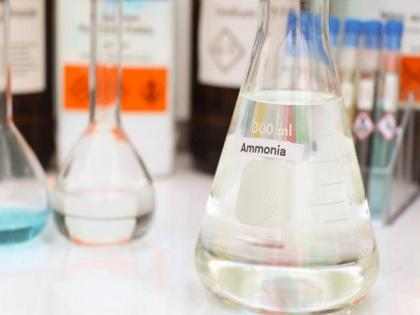India sets sights on global renewable ammonia market, takes strides towards sustainable energy leadership
By ANI | Published: May 26, 2024 04:42 PM2024-05-26T16:42:55+5:302024-05-26T16:45:03+5:30
New Delhi [India], May 26 : India is positioning itself as a key player in the renewable ammonia market ...

India sets sights on global renewable ammonia market, takes strides towards sustainable energy leadership
New Delhi [India], May 26 : India is positioning itself as a key player in the renewable ammonia market with several international trade agreements already inked and more on the horizon.
According to S&P Global Commodity Insights, however, industry insiders emphasize the need for greater policy clarity and price stability to transform these agreements into binding deals.
The country's ambition to produce 5 million metric tons (mt) of renewable hydrogen by 2030 and secure a 10 per cent share of the global trade by that time underscores its commitment to renewable energy.
ACME-IHI and ReNew-Jera are among the leading entities that have entered into non-binding supply agreements for renewable ammonia.
According to analysts at S&P Global Commodity Insights, more such agreements are likely to follow, serving as guiding lights for companies in securing financing and finalizing engineering, procurement, and construction contracts.
These agreements are crucial in the early commercial stages of development.
India's renewable energy sector benefits from various incentives, including cheap power, subsidies, low-cost loans, and readily available land, provided by federal and state governments.
These incentives are instrumental in accelerating large-scale projects, with exports expected to commence around 2027.
However, concerns linger regarding the consistency of government policies amidst the nation's escalating domestic energy demands, leading to some scepticism among developers regarding export prospects.
While India boasts nearly 100 renewable or low-carbon hydrogen projects with a combined capacity of 7.85 million mt, the challenge lies in finding a market for its renewable ammonia.
The Japanese and South Korean markets, traditionally reliant on low-carbon ammonia produced using fossil fuels with carbon capture, present stiff competition. The distinction between "clean" and "green" hydrogen/ammonia further complicates matters, with subsidies in these markets favouring low-carbon options.
Despite these challenges, India's renewable hydrogen/ammonia is expected to remain competitive globally due to its cost advantages.
The National Green Hydrogen Mission 2023, which waives interstate transmission charges for renewable energy and offers substantial subsidies, plays a pivotal role in driving down production costs.
Moreover, India enjoys a significant transport cost advantage over the Middle East in supplying to North Asia, further enhancing its competitiveness.
Industry leaders expressed confidence in India's ability to meet stringent European requirements for renewable fuels at a fraction of the cost incurred elsewhere.
Mahesh Kolli, President and Joint Managing Director of Greenko, highlights India's potential to produce renewable hydrogen at a significantly lower cost, even without subsidies, compared to other markets.
Kolli said, "To meet the standards, the renewable hydrogen cost in most countries in Europe and other markets is touching close to USD 8-USD 10/kg ... In India, we can achieve all this in USD 3-USD 4/kg range and that too without subsidies."
Disclaimer: This post has been auto-published from an agency feed without any modifications to the text and has not been reviewed by an editor
Open in app